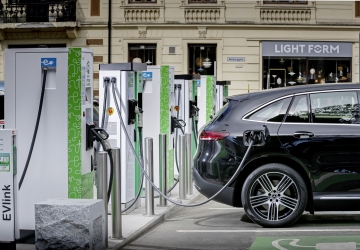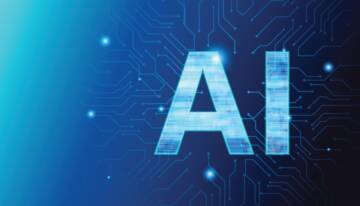What does COVID-19 teach us about the future of e-mobility?

Covid-19 has most of us confined to our homes, with a significant impact on our economy. Like in any other crisis, this has an immediate impact on our electricity consumption. E-mobility is strongly related to the availability and pricing of our energy. So let’s start there.
Covid-19 has most of us confined to our homes, with a significant impact on our economy. Like in any other crisis, this has an immediate impact on our electricity consumption. E-mobility is strongly related to the availability and pricing of our energy. So let’s start there.
Sneak peek into the future: more active usage of zero carbon energy when available
But this might be a sneak peek into our energy system future, as today, renewables in Europe are mounting up to 15-20% of the generation, yet are set to increase significantly the coming decades. Even if our demand post Covid-19 mounts up again, we’ll have significant more periods where we need active consumers to switch on when zero-carbon, cheap energy is abundantly available, or prices will go below zero regularly.
Enter new business opportunities
Yet we don’t consume energy for the fun of it. We need a useful purpose for it at the same moment that it is produced, or we need to store it. The electrical grid is experiencing many challenges today, partially caused by an increase in renewables and an increased electrification of the society. Managing the balance between demand and supply is therefore becoming more challenging every day to keep the grid stable.
Hence electric batteries and thermal storage are making an entry at an accelerated rate driven by this opportunity, while their cost drops significantly. So are batteries on wheels, with ever increasing storage capacity to provide more range for the same money to every new electric car model that gets introduced. This increasing storage capacity in electric vehicles might just be, at least partially, the answer in our zero-carbon, renewable driven energy system in the future. An average EV today packs a whopping 80 kWh of electricity, meaning roughly 400km range. While we on average drive only 10% of that range on a daily basis, and the car would be able to charge overnight. But it could just as well charge when there is this abundancy of energy available, as sun or wind will be nearly always available if you have about 10 days to wait for them.
Will we choose as green as possible over as soon as possible in mobility?
But imagine how this will change the way we look at transport in general. Our ‘just in time’ mantra which obliges transport to act ‘as quickly as possible’, might just get challenged by a ‘as green as possible’ option. Another thing Covid-19 teaches us, is the resilience of the online shopping industry to crisis moments like these. ‘Order today, get it tomorrow’ might become 1 of the options, next to ‘get it delivered green & cheap’. In the latter option, the electric delivery vans will remain parked until they got charged with abundant sun & wind generation. A couple of days delay versus a cheaper, carbon-free delivery. What option will you choose?
Nearly 1000 electric buses will join De Lijn bus fleet over the next 15 years. As they are usually parked during the night, bus depots are getting equipped with significant upgrades of their electrical installation. As such, buses can contribute to the electrical grid stability.
Let’s expand our dream with new future technologies such as vehicle-to-grid. In a nutshell: your car can discharge its’ battery back into the grid when necessary. 80 kWh of flexibility. Or roughly 9 days of an average household electricity consumption. Charge it during that sunny day, or that windy storm, and run on it for a week since your car is able to provide this stock. Or have that online shop deliver your order to you at an even lower cost, as the delivery vans help the system when sun & wind are absent for a couple hours/days, and gain a profit from your time flexibility. Accurate production forecasting of weather conditions might even provide you with a clear view on when your car is best plugged in. As such, transport might move from a CO2 emitting sector to a solution that helps us phase out fossil fuel generation by 2030.
Special thanks to Dieter Jong, energy expert at Eiya Consult and Steven Van Deun, Segment Lead Smart Cities Benelux at ABB.
Latest insights & stories

Seven cybersecurity trends and threats for 2025
Last year saw another alarming increase in cyber-attacks, with hackers using increasingly sophisticated methods. Proximus NXT and its security partners explain how to navigate a minefield of vulnerabilities in 2025.
IT is innovating faster than ever. We should embrace the limitless possibilities in cloud adoption, generative and non-generative artificial intelligence and the increasing use of APIs, says our expert panel. At the same time, cyber criminals see such trends as opportunities to compromise businesses and are capitalizing on new vulnerabilities.

The az groeninge hospital innovates care with 5G
A private 5G network at az groeninge provides the platform for the hospital to roll out innovation. From remote monitoring with biosensors to robotic surgery and training using VR: everything is focused on patient care.

Why your AI project is also a data project
AI needs quality data to realize its full potential. Yashfeen Saiyid, Data & AI Practice Lead at Proximus NXT, explains how to use a data-driven approach to lay the foundations for a successful AI project.
“There are more and more business applications, these days, based on artificial intelligence. And the accelerating rise of generative AI, with ChatGPT as its flagship, is simply breathtaking. According to Gartner, 90% of companies will use AI in the workplace by 2025,” begins Yashfeen Saiyid, Data & AI Practice Lead at Proximus NXT and Managing Director at Codit.